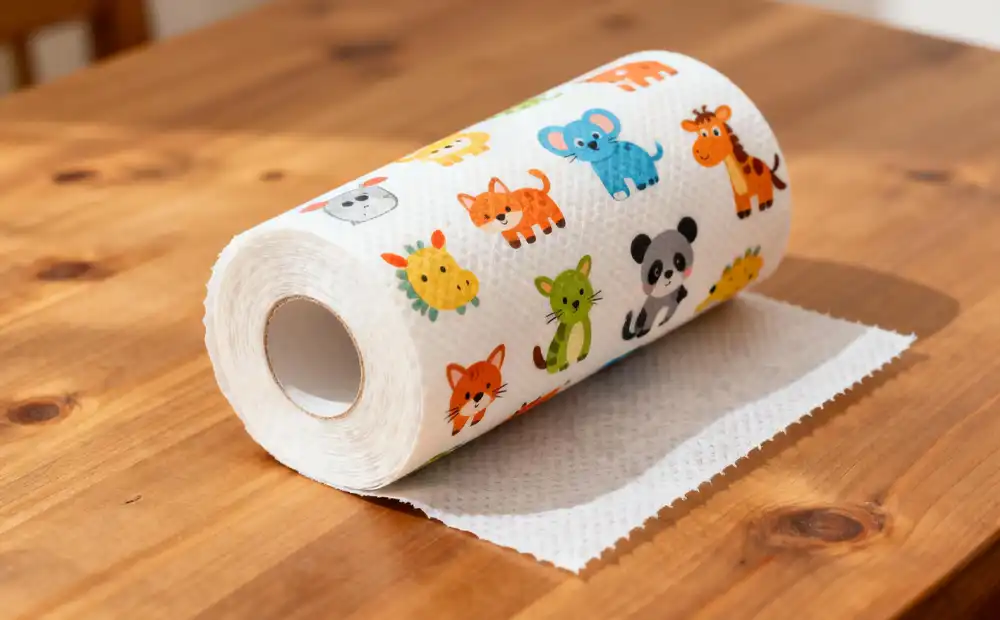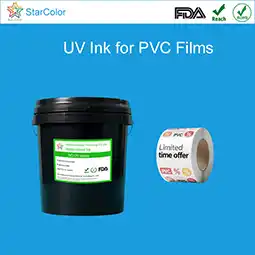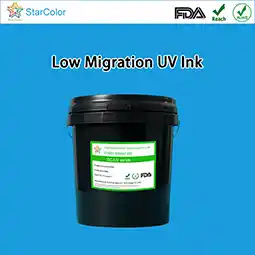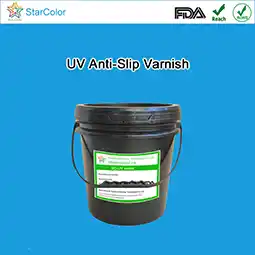Precautions for printing water-based inks on non-woven fabrics
Date: Jun 21 2023 From: Star Color Views:
Practical guidance for selecting inks, substrate pretreatment, process control, drying, post-processing and quality assurance when printing water-based inks on nonwoven (PP, PET, viscose) materials.
Introduction
Nonwoven fabrics (polypropylene/PP, polyester/PET, viscose/cellulosic blends) are widely used because of light weight, cost efficiency and easy processing. Water-based inks align well with environmental requirements and are especially suitable for sensitive applications such as food packaging and children’s products. However, nonwovens are porous, uneven in surface energy and often absorb ink quickly—challenges that require carefully matched ink chemistry and tight process control to avoid defects such as bleed-through, poor adhesion and color inconsistency.
1. Ink Selection: Match Resin System and Application
Choose inks that are formulated for the specific nonwoven type and the end-use environment. Do not assume a single “general” ink will suit all nonwovens.
- PP (polypropylene) nonwovens: surface energy is low and non-polar. Use polyurethane-acrylate hybrid water-based inks to improve adhesion (cross-linking and polarity). Target adhesion ≥ 4B (cross-hatch test).
- PET nonwovens: surface energy is higher; well-formulated pure acrylic inks often give good film formation and gloss (high 60° gloss values). Ideal for decorative or high-visibility uses.
- Viscose / cellulose-rich nonwovens: very absorbent. Use high-solids, low-penetration formulations (solid content ≥45%) to avoid strike-through. Dense film formers such as acrylate-modified resins are preferred.
- By application: For food-contact or children’s products, ensure inks meet the relevant food-contact or safety standards; choose low-odor, low-VOC, certified raw materials.
2. Substrate Pretreatment: Build a Reliable Adhesion Base
Contaminants and low surface energy cause adhesion failure. Effective pretreatment eliminates the most common root causes.
2.1 Cleanliness
- Remove dust and fiber debris with vacuum/extraction systems prior to printing (air speed 5–8 m/s recommended for effective capture).
- Remove lubricant or processing oil with a light wipe using food-grade ethanol (75%) or use low-temperature plasma cleaning when solvent wiping is not desirable.
2.2 Surface energy modification
- Corona treatment is the most common approach for PP: aim for surface tension ≥ 38 dyn/cm; treat immediately before printing (ideally print within 2 hours to avoid surface reversion).
- Plasma treatment is suitable for thin nonwovens or where corona would damage the substrate; plasma can raise surface tension to ≥ 42 dyn/cm without mechanical damage.
- Primer / sizing is useful for thick nonwovens: apply a thin water-based primer (3–5 g/m²) to seal pores and create a consistent, higher energy surface for ink laydown.
2.3 Web tension control
Nonwovens are low-tension materials; maintain consistent web tension (suggested 3–8 N/m depending on basis weight) and ensure roll alignment (roller runout ≤ 0.1 mm) to avoid wrinkles and misregister.
3. Printing Process: Key Parameters and Defect Prevention
Because nonwovens can absorb rapidly and deform, keep process windows tight: control ink volume, pressure, and speed.
3.1 Ink volume management
- Thin nonwovens (30–50 g/m²): aim for final film thickness 8–10 µm. Use high-mesh, low-volume anilox / roll configuration (e.g., 800–1000 line screen, 5–6 BCM volume) for flexo.
- Thicker nonwovens (100–200 g/m²): film thickness 12–15 µm acceptable; use 600–800 line screens and higher transfer volumes.
- For solid large-area colors, prefer multiple thin passes (two passes of 6–8 µm) rather than one thick pass (12–15 µm) — this reduces strike-through risk by ~60% and improves uniformity.
3.2 Pressure and speed
- Flexo pressure: 0.1–0.2 MPa recommended; higher pressures force ink into pores and can cause deformation.
- Screen printing: maintain 3–5 mm off-contact distance; lower speed but thicker laydown is typical.
- Printing speed: match to drying capability. Typical flexo speeds: 150–200 m/min for water-based; ensure drying capacity prevents stacking or blocking.
3.3 Color control
- Stir inks thoroughly before use and monitor pigment settling. Implement inline color checks every 30 minutes to maintain ΔE ≤ 0.8 across the run.
- Computerized color matching and spectral measurement improve batch-to-batch consistency.
4. Drying & Curing: Eliminate Residual Moisture Safely
Thorough drying prevents mold, blocking, and adhesion loss. Use an appropriate combination of drying technologies and environmental control.
4.1 Drying methods
- Hot air (recommended for most water-based systems): 50–60°C air with 3–5 m/s flow; drying tunnel length depends on speed (e.g., for 200 m/min, allow ~8–10 m of tunnel) to reach residual moisture ≤ 2% in the film.
- Infrared (IR): medium-wave IR (2–5 µm) is effective for thicker films; preheat with IR (70–80°C) then finish with hot air to avoid surface skinning.
- UV curing (for UV-reactive waterborne inks): LED-UV at 80–120 mJ/cm² can be used where compatible; verify that the nonwoven is not damaged by UV or heat.
4.2 Environmental control
- Maintain factory temperature 23 ± 2°C and relative humidity 50 ± 5% for best drying consistency.
- High humidity (>60%) slows drying and increases blocking risk; use dehumidification when necessary and increase drying energy by 5–10°C if humidity cannot be reduced.
5. Post-Processing & Storage
- Allow printed rolls to cool to ambient temperature (25 ± 3°C) before cutting or stitching. Hot handling can cause blocking and smearing.
- If lamination/laminating film is required, ensure ink is fully dry; typical lamination settings: 60–70°C and 0.3 MPa pressure—verify compatibility with the chosen ink.
- Store finished rolls in a cool, dry warehouse (15–25°C, RH 45–55%), stack to a safe height and separate batches clearly.
6. Quality Checks & Typical Tests
Regular inline and batch tests reduce scrap and ensure customer acceptance.
- Adhesion (cross-hatch): 4B–5B target for PP/PET; 5B for cellulose nonwovens.
- Friction/abrasion: 500 g reciprocating cloth test, 500 cycles with no significant color transfer for durable products.
- Dry-back moisture: residual moisture after drying ≤ 2% for stable lamination and to avoid microbial growth.
- Color consistency: ΔE ≤ 0.8 between batches for branded products.
7. Quick Troubleshooting Table
| Defect | Likely Cause | Quick Fix |
|---|---|---|
| Bleed-through / strike-through | Too thin ink solids / porous substrate / excessive ink volume | Use higher-solids ink (≥45%), lower anilox volume, apply primer or multiple thin passes |
| Poor adhesion | Contaminated substrate / low surface energy / insufficient pretreatment | Clean surface, corona/plasma treat to ≥38 dyn/cm, check resin system |
| Blocking (stacking) | Ink not fully dry / high humidity / inadequate drying | Increase drying energy/time, dehumidify room, extend drying tunnel |
| Color mottling | Uneven absorption / pigment settling | Reduce ink volume, increase pigment dispersion quality, ensure good stir / circulation |
8. Recommendations for Suppliers & Collaboration
- Work with suppliers that offer customization for resin polarity, solids content and additives specifically for nonwoven substrates.
- Ask for small pilot batches and on-site trials. Ideally, supplier technical staff should be available to fine-tune press settings.
- Implement batch traceability (batch no., SDS, test reports) to simplify root cause analysis when issues occur.

Conclusion
Successfully printing water-based inks on nonwoven fabrics requires a systems approach: select the right resin chemistry, prepare the substrate properly, control printing parameters, and ensure complete drying. With proper formulation and process controls—and by partnering with experienced suppliers—manufacturers can achieve low defect rates and produce stable, high-quality prints for food packaging, hygiene products and other sensitive applications.
 RU
RU EN
EN CN
CN















